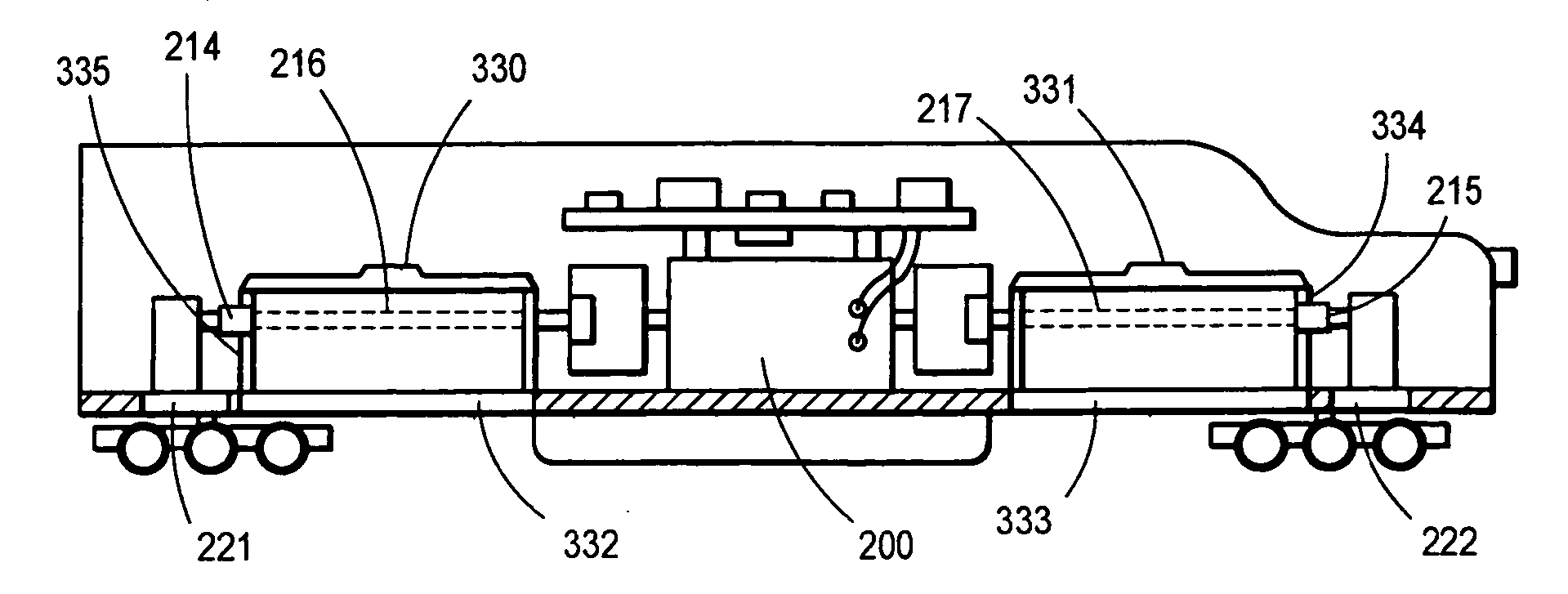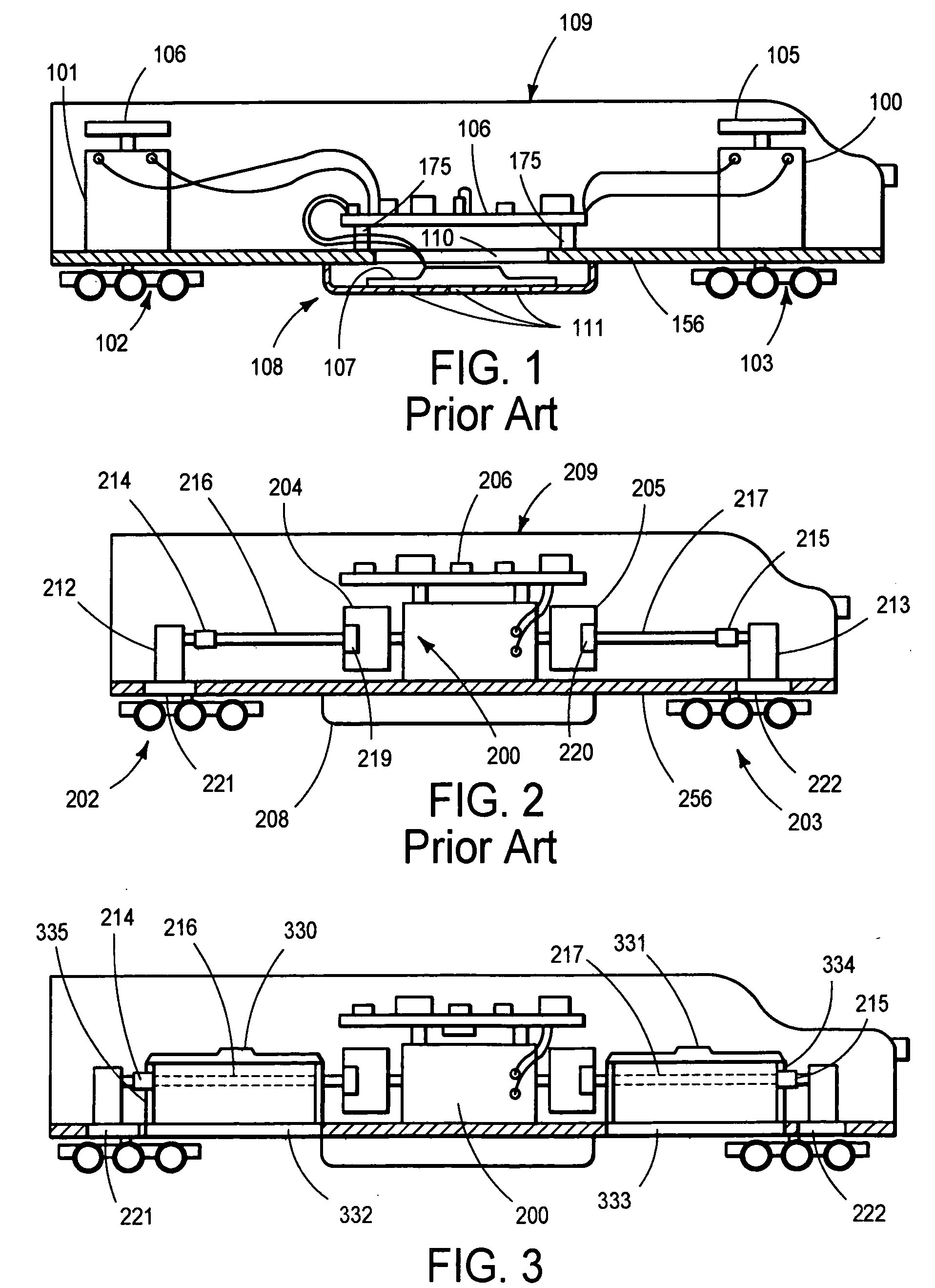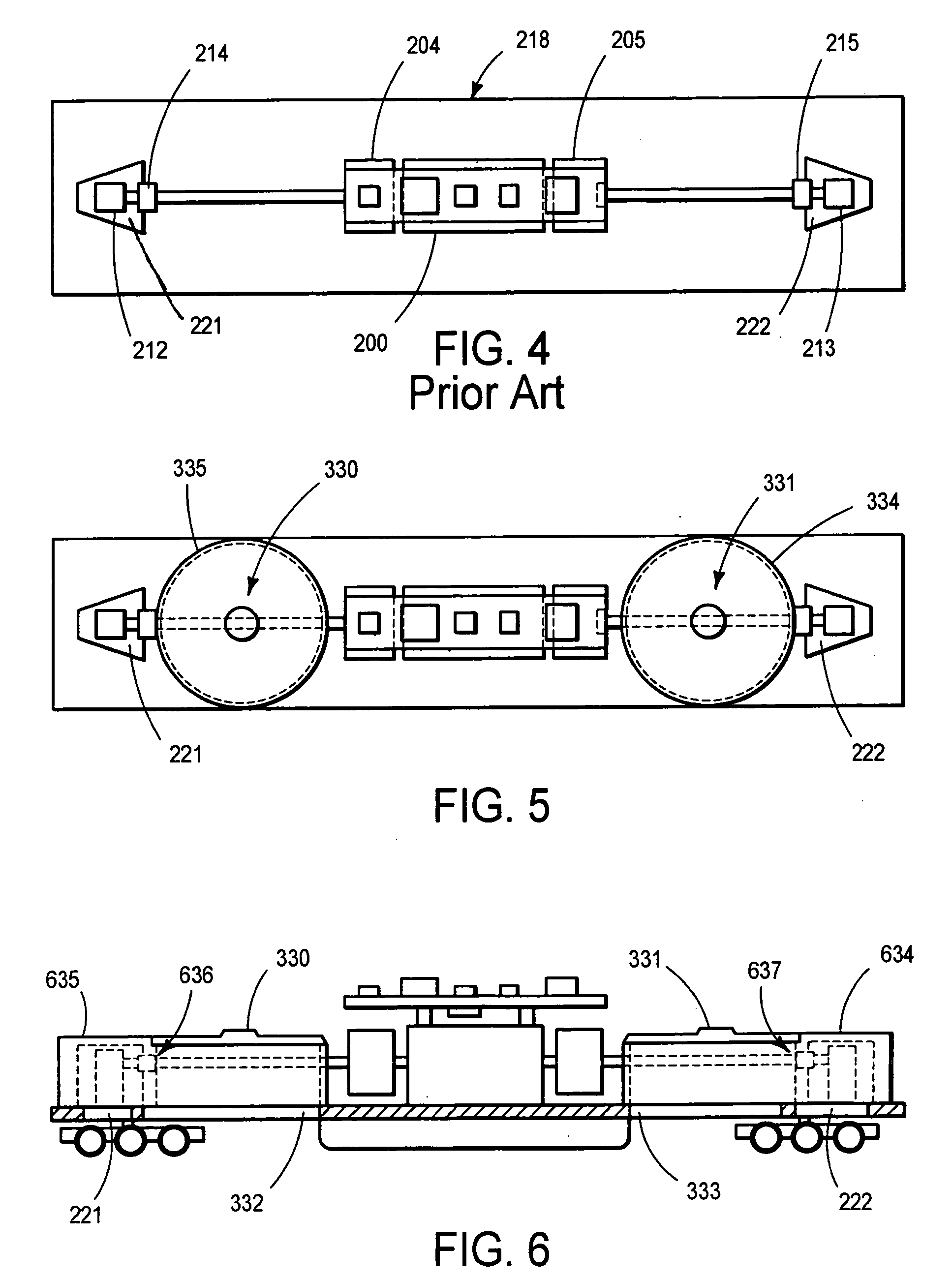Sound systems for model railroad locomotives
a sound system and locomotive technology, applied in the field of model railroad locomotive sound system, can solve the problems of affecting the sound quality affecting the base response of the sound system, and potentially constructive interference of some of the higher frequency tones, so as to reduce the noise quality, reduce the noise of the sound system, and maximize the cavity volume
- Summary
- Abstract
- Description
- Claims
- Application Information
AI Technical Summary
Benefits of technology
Problems solved by technology
Method used
Image
Examples
Embodiment Construction
[0059] Wide-bodied Diesels: FIG. 3 shows one method to overcome these difficulties for wide-bodied diesels. Speakers for wide bodied diesels can have a diameter equal to the inside width dimension of the diesel cab. The speakers 330 and 331 are each supported by a generally hollow speaker mounting enclosure or “speaker tube”334 and 335. The chassis has additional openings, 332 and 333, to allow the front wave from the speaker to propagate under the locomotive and pass to the outside through the open trucks and other open areas under the engine. These openings to vent the speaker front wave through the chassis can be configured as one large opening, as shown, or as a plurality of smaller openings as convenient. The drivelines, 216 and 217 and the universal joints, 214 and 215, pass through custom holes at the front and back of the speaker tubes. These driveline holes are only large enough to allow the drivelines or other components of the drive-train to pass through and operate witho...
PUM
| Property | Measurement | Unit |
|---|---|---|
| volume | aaaaa | aaaaa |
| interior volume | aaaaa | aaaaa |
| diameter | aaaaa | aaaaa |
Abstract
Description
Claims
Application Information
 Login to View More
Login to View More - R&D
- Intellectual Property
- Life Sciences
- Materials
- Tech Scout
- Unparalleled Data Quality
- Higher Quality Content
- 60% Fewer Hallucinations
Browse by: Latest US Patents, China's latest patents, Technical Efficacy Thesaurus, Application Domain, Technology Topic, Popular Technical Reports.
© 2025 PatSnap. All rights reserved.Legal|Privacy policy|Modern Slavery Act Transparency Statement|Sitemap|About US| Contact US: help@patsnap.com



